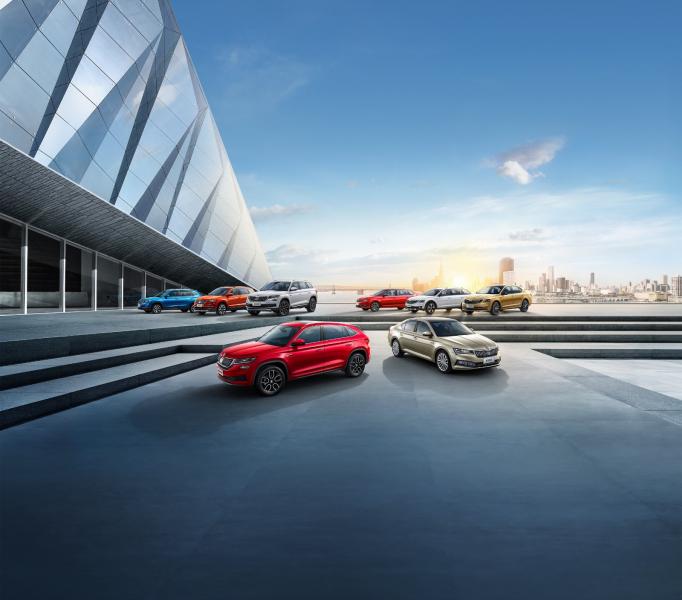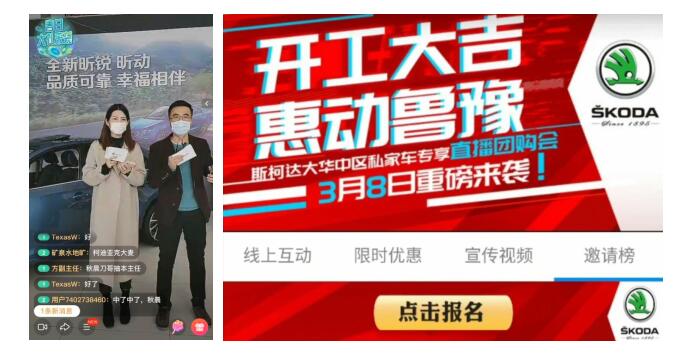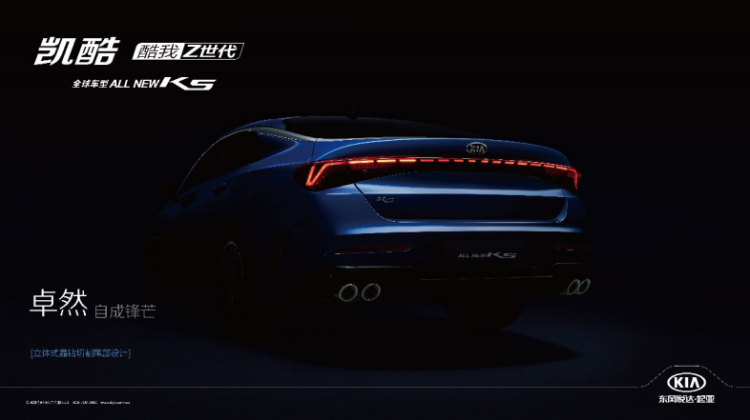In 2020, the trend of live streaming has swept from daily necessities to insurance funds, real estate, automobiles and other industries. Focusing on the automotive industry, almost everyone from manufacturers, dealers, to media platforms are involved in the live broadcast. Some people also raised questions: After the home epidemic prevention period, will the car live streaming trend continue? Next, let’s take a look at how the Skoda brand connects online and offline to lay out the “post-epidemic era”.

Digital empowerment Expanding online touchpoints
In recent years, the automotive industry and the retail industry are facing digital transformation. The Skoda brand continues to expand its online touch points through e-commerce platforms, digital channels, live broadcasts and other forms.
In January 2020, the Skoda brand and Suning.com jointly brought the offline “Skoda Space” stores and the online Suning.com “SAIC Skoda Flagship Store” (https://skoda.suning.com/), creating a brand new Automobile retail service cooperation model empowerment. The online e-commerce platform of the Skoda brand consists of SAIC Skoda self-operated mall (https://www.saicskoda.com.cn/mall/), SAIC Skoda Tmall flagship store (https://skoda.tmall.com/) , can be further expanded. With the launch of the new Xinrui and Xindong in February, Skoda’s related WeChat applets, model-specific webpages, and live broadcasts have been launched one after another, allowing consumers to watch cars in the “cloud” without leaving home.
As an emerging model in the marketing field, live broadcasting often faces the dilemma of lack of experience in automobile-related practitioners. For cars, consumers’ choice and purchase is a careful and lengthy decision-making process. The Skoda brand has developed a special training plan, launched a series of measures in line with consumer needs and local actual conditions together with 8 Skoda regions across the country, and continued to explore measures such as live broadcast and circle of friends operation and maintenance.
On March 7th, Skoda Greater China’s new Xinrui and Xindong online live broadcast launch conference and Spring Thunder Action launched. The beauty anchor Qiu Chen and the old driver Sandao analyzed the highlights on the spot in all directions. The cumulative view volume on that day exceeded 5.7 million . On March 8, Skoda Dahua Central District’s private car exclusive live broadcast group buying event, in conjunction with 75 Skoda dealers in Shandong and Henan provinces, won more than 2,000 interested users to sign up and stay. And many Skoda 4S stores have also incorporated live broadcasting into their regular operations. Among them, the Skoda Xiamen Yinghai watermelon video live broadcast once won 110,000 popularity points, and went straight to the 9th place in the live broadcast hourly list.

A Skoda 4S store in Guangzhou said: With the domestic epidemic prevention and control actively improving, the number of new customers coming to the store has picked up in recent days, and most of the customers who have retained funds or are willing to buy come from websites and live broadcasts.
Open up online and offline door-to-door service to win praise
In the past, when people mentioned live broadcasts, the first thing people thought of might be “Internet celebrities” and “bringing goods”, but live broadcasting is just for bringing goods? At the beginning of the year, the construction of Leishenshan and Huoshenshan hospitals was live broadcasted, and tens of millions of viewers were “supervised” online; in March, CCTV News launched the slow live broadcast of “Cloud Cherry Blossoms”, which made people feel that “the peaches and plums do not say anything, follow the rain, I also know that there will always be a sunny day” spirit.
Live broadcast can not only bring goods, but also a new bridge for information dissemination. For the automotive industry, in addition to expanding online contact points and strengthening communication with consumers through live broadcasts, online and offline connections are also indispensable.
From the test drive in the early stage of purchase, to car maintenance, road rescue, etc., the Skoda brand has launched a series of considerate measures to connect online and offline to upgrade the service experience. Consumers can log on to the official account of SAIC Skoda, and make WeChat reservations for e-channel services through “Car Assistant” and “Service Reservation”. The digital service process provides customers with a low-touch, paperless maintenance service experience. Some dealers also provide consumers with all-round services such as private car pick-up, door-to-door test drive, contract signing, and car delivery. From February 1 to March 22, the Skoda brand has provided users with a total of 2,780 door-to-door test drives, door-to-door delivery, and door-to-door pick-up and delivery services nationwide, and has won high praise from users.
On the basis of measures such as digital channels and online live broadcasts, the Skoda brand has also recently launched a number of measures such as a million-dollar subsidy, free in-car disinfection, and a warranty extension plan. Before March 31, car owners who purchase maintenance packages online through the Skoda original maintenance WeChat applet can enjoy 4 levels of “epidemic” subsidies. This time, the Skoda brand provided a subsidy pool with a total amount of 1 million yuan to fight the epidemic with car owners. The car owner can make an appointment for maintenance online. After the maintenance is completed at the store, the verification code on the mobile phone will be written off, and there is no need to confirm the settlement.
In addition, before March 31, car owners can also enjoy free in-car disinfection services, as well as a 32% discount on the purchase of original PM2.5 air conditioning filters, and a 25% discount on original negative ion generators and air conditioning system cleaning and maintenance kits.
The wind has blown, who can go further? Innovation and change never come suddenly and suddenly, they exist in every link of experience and service. Whether it is the live broadcast trend brought about by the “stay-at-home economy”, or online car viewing, digital channels, door-to-door services, etc., online and offline mode innovations are imperative.




